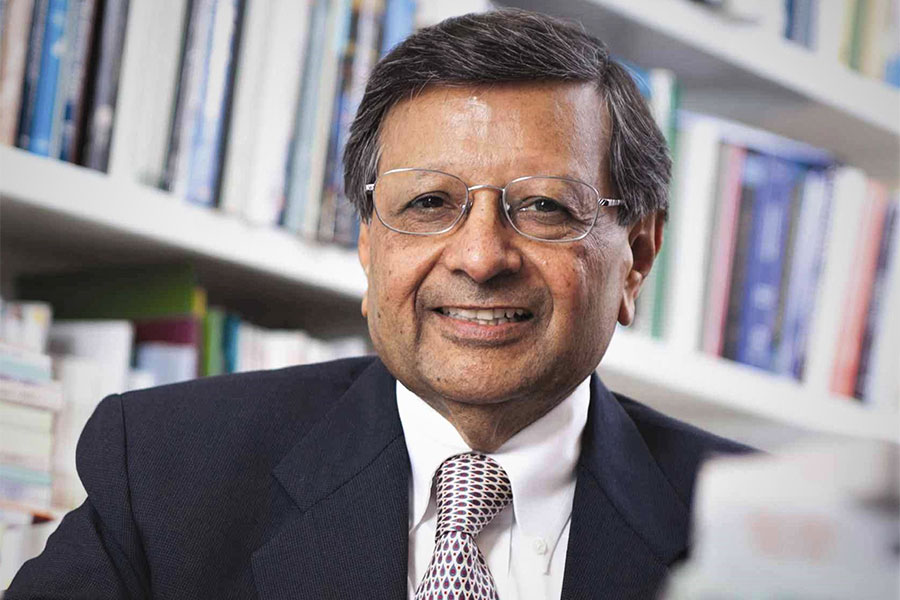Revitalising Indian manufacturing: Modernisation of home, farm and factory
Expressing optimism that India can capture the present post-COVID window of opportunity in manufacturing, Prof Jagdish Sheth suggests that India must prioritise modernising the farm, strengthening consumer-facing sectors and making its factories smart to progress towards the higher end of the value chain.

At crucial periods in its history as an independent nation, India has missed making a much-needed push into manufacturing. The first opportunity came up in the 1950s itself, when the US wanted to outsource manufacturing and they chose India. But due to the very recent colonial hangover, India was wary of allowing foreign investments. This protectionist tendency came at a heavy cost to the economy over the next few decades, till the time India liberalised its services sector in 1991.
Since then, the country has progressed in manufacturing, but it hasn’t been good enough to provide the jobs, GDP growth or export success that its neighbour China has managed. If you look at 2019 data, China’s exports of goods are nearly 8 times the value exported by India. Moreover, while China’s top exports are electrical machinery, appliances and equipment, India’s exports are dominated by low value raw materials and products requiring less sophisticated manufacturing. Even after the government envisioned growing the share of manufacturing in GDP to 25%, and even after the launch of the Make in India programme, progress has been slow. As a result, India’s growth continues to be largely services-led.
This is surprising, since India has the requisite resources for unleashing a high growth trajectory across the three economic pillars – industrial, agricultural and services sectors. Moreover, it also has a large and growing domestic consumer market for a range of branded products across foods, beverages, furniture, automobiles, pharma and many others.
The worth of this domestic market cushion is evident particularly in scenarios like the present one, when COVID-19 severely threatens the growth prospects of a number of export-driven economies. Besides this, India has a rich resource pool of quality labour, and a vast scope for setting up of large manufacturing units.
Given these scale advantages, India has often been cited by businesses and investors as the best possible alternative to China, even as the latter scripted a stupendous and unparalleled success story as a global manufacturing hub. But policy issues and infrastructural bottlenecks have largely kept them away.
On the other hand, today’s post-COVID-19 situation has also woken them up to the dangers of an overreliance on one source, and provided India with another spectacular window of opportunity to give its manufacturing sector the desired impetus.
As I discussed in my previous column, you cannot imagine sustained and holistic economic growth without a robust and competitive manufacturing sector. And I am very positive that India can capture this opportunity. But rather than spreading its resources too thin across a wide landscape, India should start with a few focus sectors for a strong and more sustained push. These can then serve as catalysts and provide vital blueprints for a wider and more robust manufacturing ecosystem.
MAKE FARMING COMPETITIVE
In this regard, the farming sector deserves prominent focus, as it has been a major contributor of India’s economic prosperity over several centuries. But there is significant scope yet for improvement in the present milieu – the sector is just not performing in accordance with its potential. Moreover, there is a need to better leverage the synergies in agriculture and industry through a growth-oriented food processing sector.
Let us take the case of the US as a benchmark. There was no farming when the country was inhabited exclusively by the native Americans. When the Europeans came in, they undertook massive investments in agricultural infrastructure, both for cultivation of diverse crops and improving the productivity of agricultural land.

To give the agricultural sector a strong push, Americans later developed land grant universities or land grant colleges. These were set up to teach practical agriculture, science, military science, and engineering (“without excluding classical studies”). These universities provided professional experts to educate farmers on modern farming methods with machines, which improved and increased their labour productivity.
As a result of all these efforts, one farmer in America today produces enough food to feed 70 people. But in India, one farmer produces enough for only 2-3 consumers at best, which exemplifies the huge gap.
So, India needs to invest in modern agricultural technologies, machineries, tractors, combines, etc. and scale up the production of agricultural raw materials. A fascinating benchmark today is Vietnam, which produces six times more cashew per acre as compared to India. Cashew nuts is a dominant industry for India with natural conditions in its favour. But the lack of much needed investments in mechanisation or modernisation of agriculture has constrained the sector’s evolution.
Fortunately today, in the aftermath of the COVID-19 pandemic, monetary policies across the world will keep the cost of capital very low for at least a decade to stimulate GDP growth. Presently, our treasury bond gives less than 1% yield, and you can borrow money to buy a house at 2.5-3% interest for a 30-year mortgage.
With the low cost of capital and leasing mechanisms on offer, farmers can realistically consider investing in the latest technologies and techniques. With the proliferation of technologies under smart agriculture, it is possible to achieve very significant improvements in outcomes. With a wireless network, GPS and a subscription model, everything is cloud-based. It is possible to practice precise agriculture at a high speed, just like medical surgeries.
We can get the drip technology from Israel, which has done a wonderful job in conserving water in the desert. There are a number of other smart technologies available worldwide – it’s a question of devising the appropriate policy, providing incentives, opening up to the private sector and scaling it up.
The other constraint to be addressed is smaller landholdings, which the government enforced to take away farm ownership from landlords (zamindari). But today is a different day and age, and we must come back to actively promoting ownership of large tracts of land for farming and processing food.
The largest land holding in any country is the government. So it can set aside agricultural SEZs over thousands of acres for specialized crops, just as India has done for electronics and IT services. For instance, India can set aside 50,000 acres of land exclusively for orange groves. This can be replicated for a variety of crops, given India’s advantages of fertile soil and varied agro-climatic zones.
With modernisation of farming, India can bring down costs of agricultural commodities significantly – training, education, tools, machinery use, etc. This is critical because the value addition in agricultural commodities is not that great – it’s at about 4-5 times. Once you have successfully brought down costs in agriculture, you can bring down imports substantially.
This would also provide a strong incentive to industry to process and value add agri produce within India itself. Fortunately, India has experienced some success in this regard. An example of this is bottled water, which was virtually non-existent around three decades back, before Bisleri started a revolution. Today, India has a vibrant food processing industry across a variety of food products – chips, juices, milk products, bakery products, desserts, ready-to-eat meals, snack foods, etc.
OUTSOURCING COMES HOME
The second area of focus for Indian manufacturing is the wider consumer sector. Today, more and more families have a paucity of time for essential daily activities like cooking, cleaning or taking care of their children. The biggest outsourcing is not IT outsourcing by Indian companies to America. It is the outsourcing of household chores by families, which I call ‘outsourcing comes home’.
To me, this consumer market presents the real potential in India. We are the largest consumers in milk and dairy products and cooperatives like Amul have done a great job. In our MBA classes, we actually teach a case study on Amul as a shining star in an emerging market like India. It is quite possible to create a dozen other Amuls in India easily through the cooperative model and scale them up.
India is ranked 2nd in textile production and has all the requisite capabilities. It is the largest producer of cotton in the world. There are certain bottlenecks when it comes to making capital investments like large machineries. But again, it can be ramped up very easily, and the industry can produce more branded products across all varieties.
The most important area that deserves attention from the industry is the new modern contemporary lifestyle, which means that we have to replace the traditional toilets with modern toilets. Similarly today, furniture is custom built by carpenters fast, like we used to do in garments. Today, we have readymade garments and tailored garments are more a specialty. But with the likes of IKEA setting up in India, consumers have access to a variety of modern and convenient products that can be personalised to their requirements very quickly. The whole manufacturing sector can be revamped through the modernization of the home.

Image credit : https://bit.ly/31n5UBM
The same is the case with appliances. While I was advising Whirlpool Corporation for their business in US and Europe, I advised the Chairman that we would have to come to emerging markets ultimately. Consequently, the company entered India, aligned with TVS and brought in the washing machine capabilities. Eventually they also bought the Kelvinator brand for refrigerators, and became a dominant player in India. Today, the likes of LG and Samsung make world class products in India.
The passenger car market is growing, and it will change over time from gasoline-based to electric based. So if you are able to produce for the consumer market in the automobile industry, there is a huge multiplier.
So it ultimately comes to modernization of the home, modernization of the farm, modernisation of offices and ultimately, modernization of the factories. Technology has moved on, but India hasn’t generally kept pace with the rest of the world, barring notable exceptions like mobile technology and space research. Companies like Reliance Petrochemicals have established global benchmarks, but if you look at India’s traditional manufacturing, there is much scope for modernisation.
Achieving this goal will require more automation, whether we like it or not. Today, the automobile is essentially a computer and a typical technician cannot even work on it without a machine. So, the technician of tomorrow has to rise to a higher level. India has to reach a stage where it is involved in high end manufacturing, and outsource the low margin-high volume manufacturing to other countries. That would be key to revitalize its manufacturing ecosystem.
Jagdish N. Sheth is Charles H. Kellstadt Professor of Business in the Goizueta Business School at Emory University. He is globally known for his scholarly contributions in consumer behavior, relationship marketing, competitive strategy, and geopolitical analysis. Professor Sheth has over 50 years of combined experience in teaching and research at the University of Southern California, the University of Illinois at Urbana-Champaign, Columbia University, MIT, and Emory University. Dr. Sheth is a recipient of the 2020 Padma Bhushan Award for literature and education, one of the highest civilian awards given by the Government of India.
He is also a Fellow of the Association of Consumer Research (ACR); Fellow of the American Psychological Association (APA); Fellow of the American Marketing Association (AMA); Distinguished Fellow of the Academy of Marketing Science; and a Distinguished Fellow of International Engineering Consortium. Dr. Sheth is the recipient of an Honorary Doctorate in Science, awarded by the University of Illinois at Urbana-Champaign (2016), and Honorary Doctorate of Philosophy, awarded by Shiv Nadar University (2017). He is the recipient of all four top awards given by the American Marketing Association (AMA). Dr. Sheth has been on the board of several companies including Norstan, Pacwest-Telecom, Cryocell International, Shasun Drugs and Chemicals, and WIPRO Limited. Over the 50 years, he has been advisor to numerous companies including Whirlpool, Motorola, Texas Instruments, Cox Communications, Rockwell International, AT&T, Bellsouth, WIPRO Consumer Care, Aditya Birla Group, L.M. Mittal (Avanta), E&Y, Square D, Ingram Micro, Hughes Corporation, and others. His Rule of Three book has been the foundation for investment bankers and policy makers with respect to industry consolidation including horizontal mergers and acquisitions.
Professor Sheth has authored or co-authored more than three hundred papers and several books including Clients for Life (2000), The Rule of Three (2002), Tectonic Shift (2006), Self-Destructive Habits of Good Companies (2007), Firms of Endearment (2007), Chindia Rising (2011), The 4 As of Marketing (2012), Breakout Strategies for Emerging Markets (2016), The Sustainability Edge (2016), and Genes, Climate and Consumption Culture: Connecting the Dots (2017). His autobiography, The Accidental Scholar (2014), has inspired others in the areas of education and academic entrepreneurship. Professor Sheth has been advisor to the Government of Singapore in repositioning the nation for the future. He has also been the policy advisor to the U.S. Government about the future of the telecommunications industry. Dr. Sheth is the Founder of Center for Telecommunications Management (CTM) at University of Southern California (USC) which has now become an Institute. He is also Founder and Chairman of India, China, and America (ICA) Institute which analyzes the trilateral relationship and its impact on geopolitics, security, trade, and investment. Finally, Professor Sheth is the Founder and Chairman of the Academy of Indian Marketing (AIM) which supports research and scholarship among Indian scholars in marketing and management.













We have huge Huge GAP. We really need to reset the field.
where ever I look I find only imported product or at least technology. We in all right spirit need to create Indian brands. Of late even our brand names found origin from other than our soil.
We need to be extremely serious if we wish to create impact